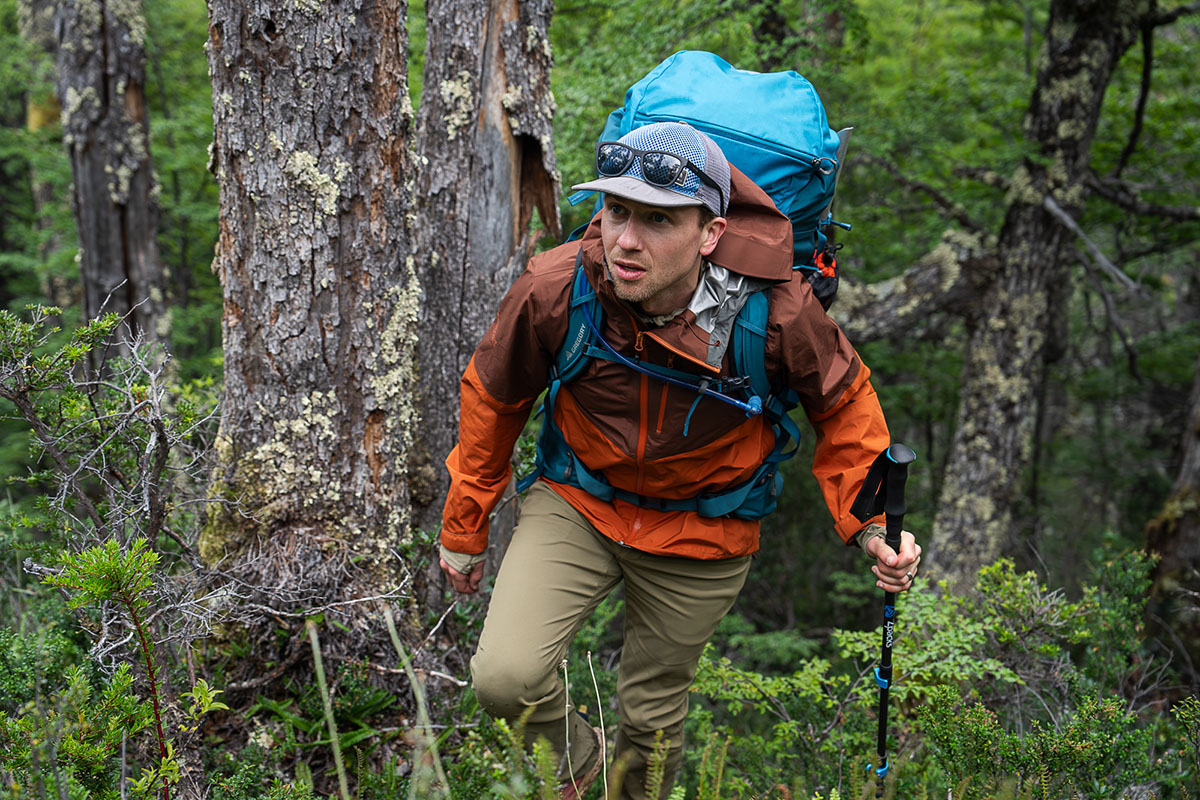
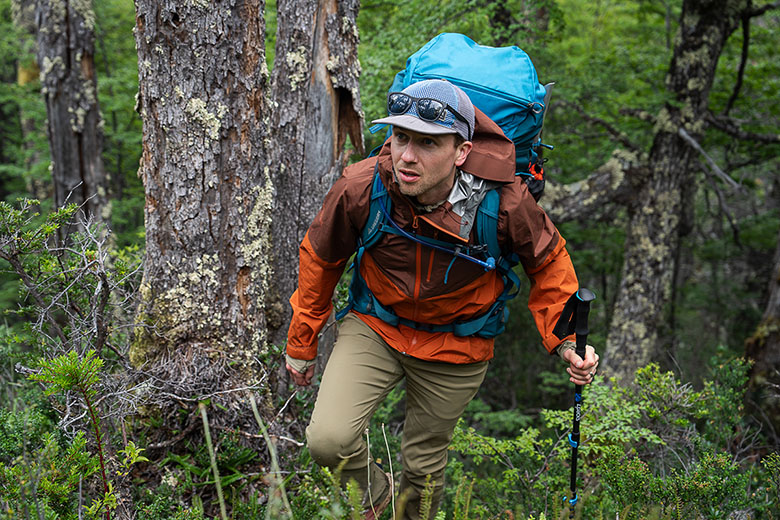
Price: $225
Weight: 11 oz.
Waterproofing: 2L Gore-Tex Paclite
What we like: Well-rounded performance for everything from hiking to spring skiing; massive side vents dump heat quickly.
What we don’t: Lining feels clammy against bare skin when working up a sweat; TorsoFlo vents are a little polarizing for casual use.
See the Men's OR Foray II GTX See the Women's OR Aspire II GTX
Seattle-based Outdoor Research is no stranger to creating quality rain jackets that can fend off the elements, and we like what they've come up with in the Foray. This do-it-all shell is light and packable for hiking and backpacking yet tough enough to hold its own for spring skiing. Recently updated with a stronger sustainability focus, the latest shell retains the proven combination of solid Gore-Tex waterproofing, premium touches like YKK Aquaguard zippers, and the brand’s signature TorsoFlo vents. These huge openings run from the bicep all the way to the hem and make it easy to quickly release heat, although they do come with compromises in comfort and styling. Below we break down our experiences with the Foray II. To see how it stacks up to the competition, see our article on the best rain jackets.
Featuring proven Gore-Tex Paclite waterproofing and a thicker-than-average 50-denier (D) shell, Outdoor Research’s Foray II GTX Jacket provides excellent protection from wind and rain. It’s true that the 2-layer construction prioritizes weight savings and packability and won’t be confused with a full-on, winter-ready hardshell, but it’s about as protective as it gets in the rain jacket market. Further, the durable water repellent (DWR) coating effectively sheds light moisture (although it'll get overwhelmed in heavy rainfall), the tall collar and three-way adjustable hood can be battened down in a storm, and the interior is fully seam taped and has yet to show any signs of vulnerability. As such, we think the Foray II is an excellent option for three-season hiking and backpacking, and it’s even viable for the occasional mild-weather ski tour (something we did with the original Foray).
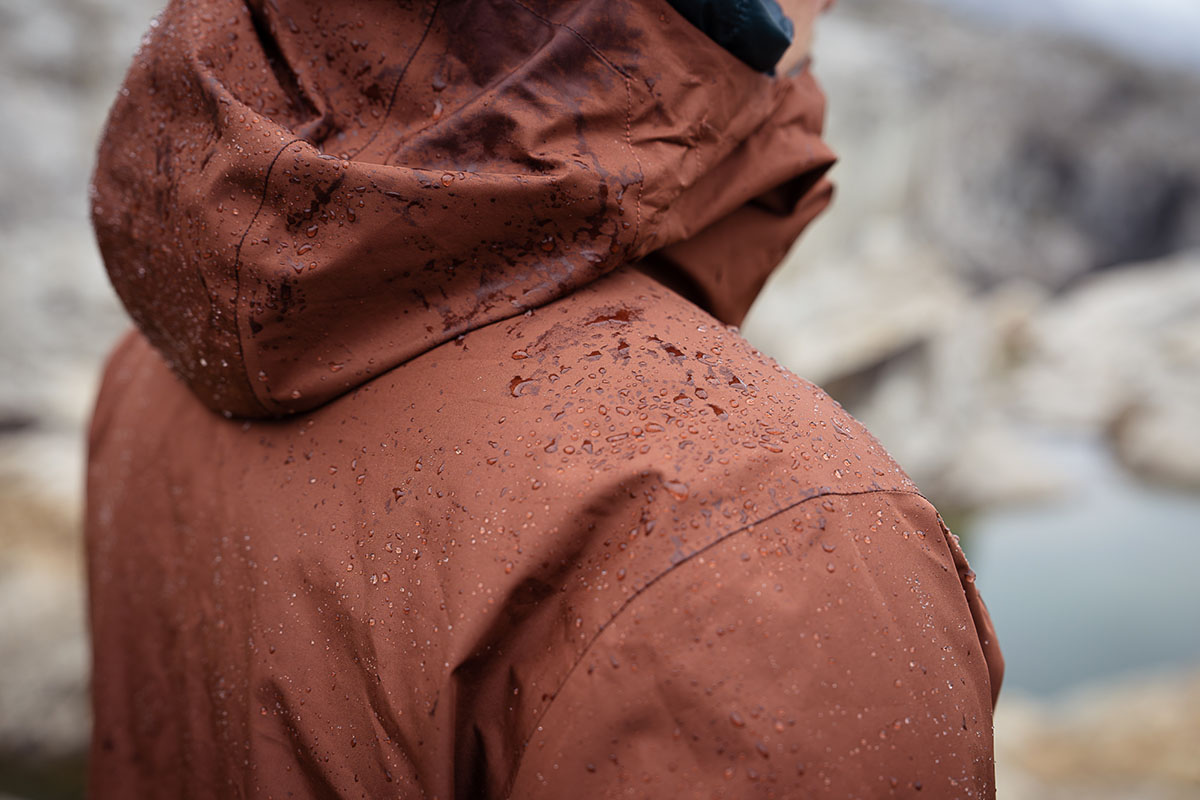
Rounding out the design, you get adjustable hook-and-loop cuffs that fit nicely over bare wrists with minimal to no bunching. They also worked well when paired with gloves ranging from thin liners to substantial undercuff winter designs. In addition, the Foray has a moderately long cut and slight drop hem (center back length is listed at 29.5 in), which provide above-average coverage. And for sealing out the elements, you can cinch the back half of the hem via a single toggle on the right side. We’re not a big fan of that final piece—it’s a compromise of the generous TorsoFlo vents—and we cover the potential downsides in the “Key Features” section below.
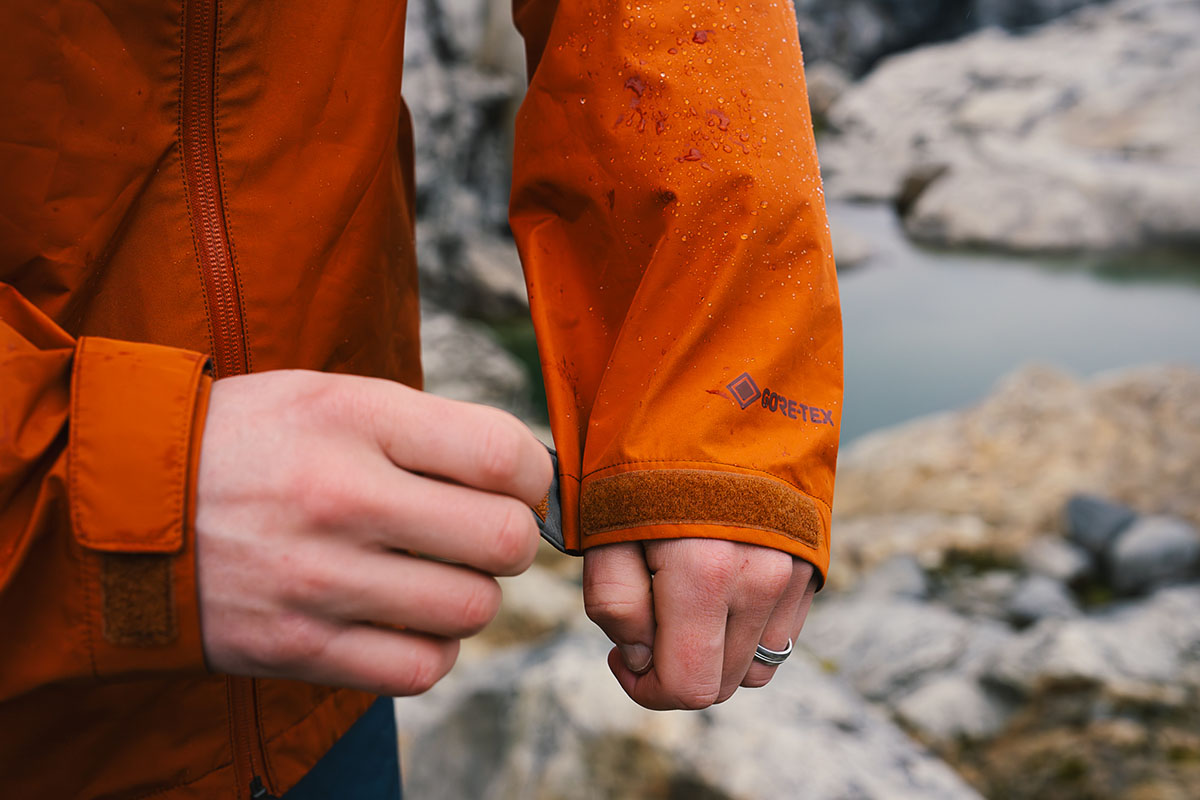
Similar to other 2-layer Gore-Tex Paclite rain jackets, we found the Foray quickly overheats during moderate activity (note: From our experience, jackets with upgraded Paclite Plus offer improved breathability). If you're working hard, the Foray's lining can feel clammy against the skin, especially compared to pricier models like the 3-layer Arc’teryx Beta Lightweight ($500) and Beta Jacket ($400), which feature softer and more breathable interiors that wick moisture better (for more on the topic, check out our article on Rain Jacket Construction). That said, the magic of the Foray lies in its full-length side zips—dubbed TorsoFlo—which run from the bottom hem to the bicep. These massive vents allowed me to dump a ton of heat quickly on the trail—more so than any hardshell I've ever used. In other words, while the fabric itself can’t match the breathability of more premium options, the side zips definitely help make up for it.
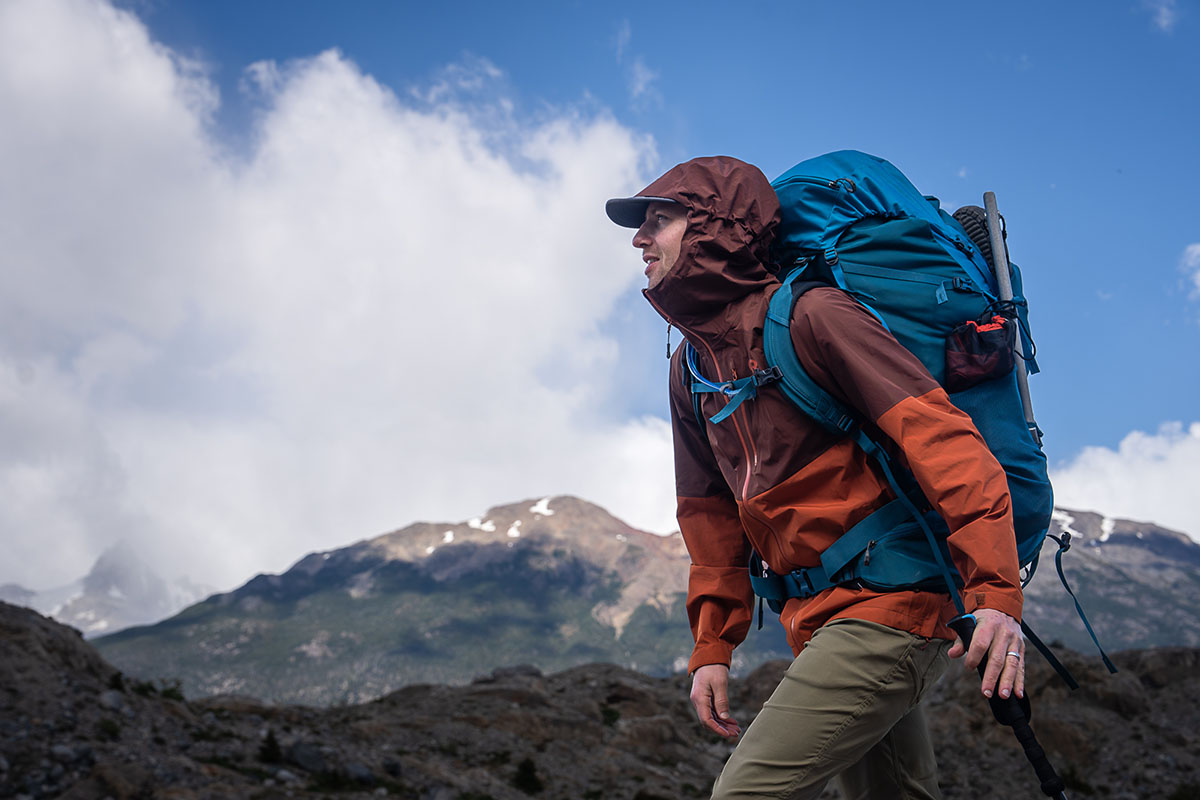
While the Foray’s 2-layer construction makes some sacrifices in breathability, it does give the jacket a flexible and comfortable overall feel. Unlike a traditional hardshell jacket that’s stiff and crinkly, the Foray’s smooth polyester shell is relatively quiet and unrestrictive even during activity. To be clear, there are downsides to the unlined interior—including clamminess during high-output use and a bit of a rubbery feel in general—but they’re far from dealbreakers and only truly noticeable when wearing the jacket over bare arms. And a final nice touch is that OR included a large patch of fleece-like material along the inside of the collar that feels cozy when fully zipped.
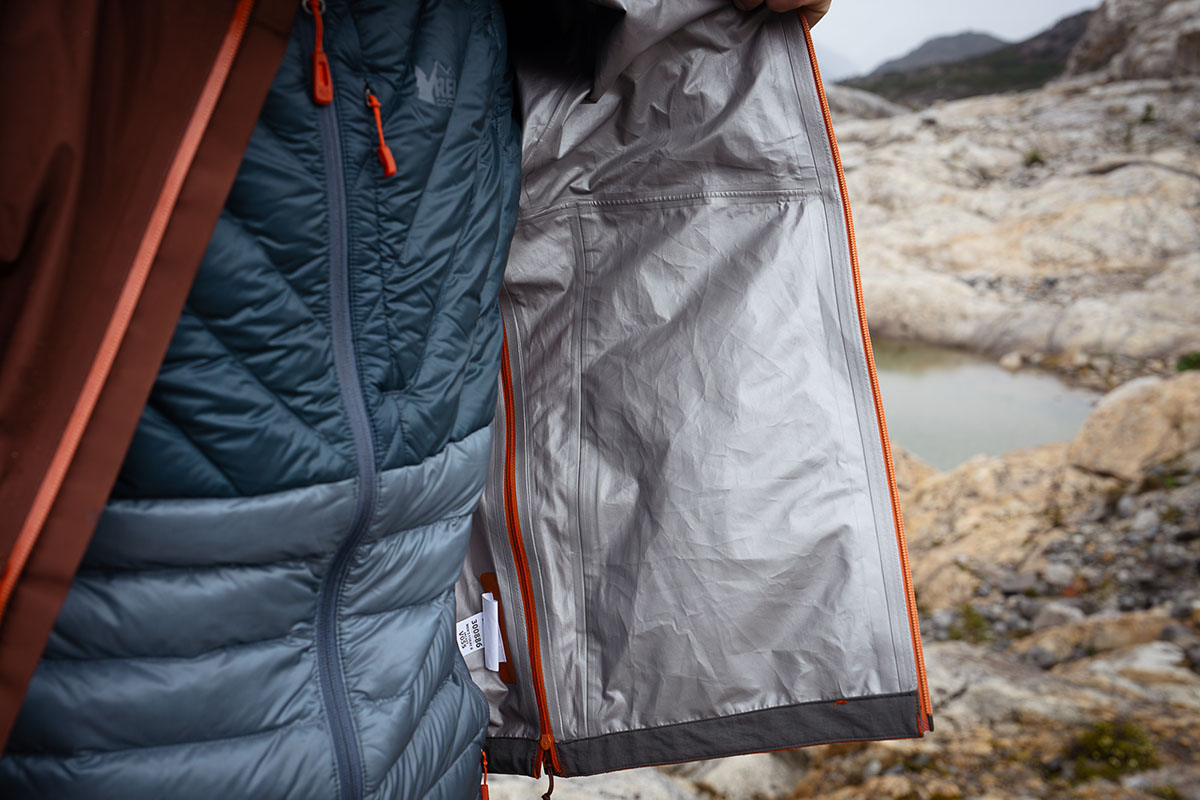
Weighing in at 11 ounces, the latest Foray II is highly competitive in the rain jacket market. For reference, it’s lighter than similarly intentioned designs like Marmot’s Minimalist (13 oz.), Rab’s Downpour Plus 2.0 (13.2 oz.), and Arc’teryx’s Beta Lightweight Jacket (12 oz.). You can shave some weight with a true ultralight piece like OR’s own Helium Rain Jacket (6.2 oz.), but that’s a much more specialized option that forgoes features like pit zips and hand pockets. All in all, the Foray II strikes a really nice balance—it’s well appointed but still reasonably light—and I have no qualms about bringing it on long backcountry adventures.
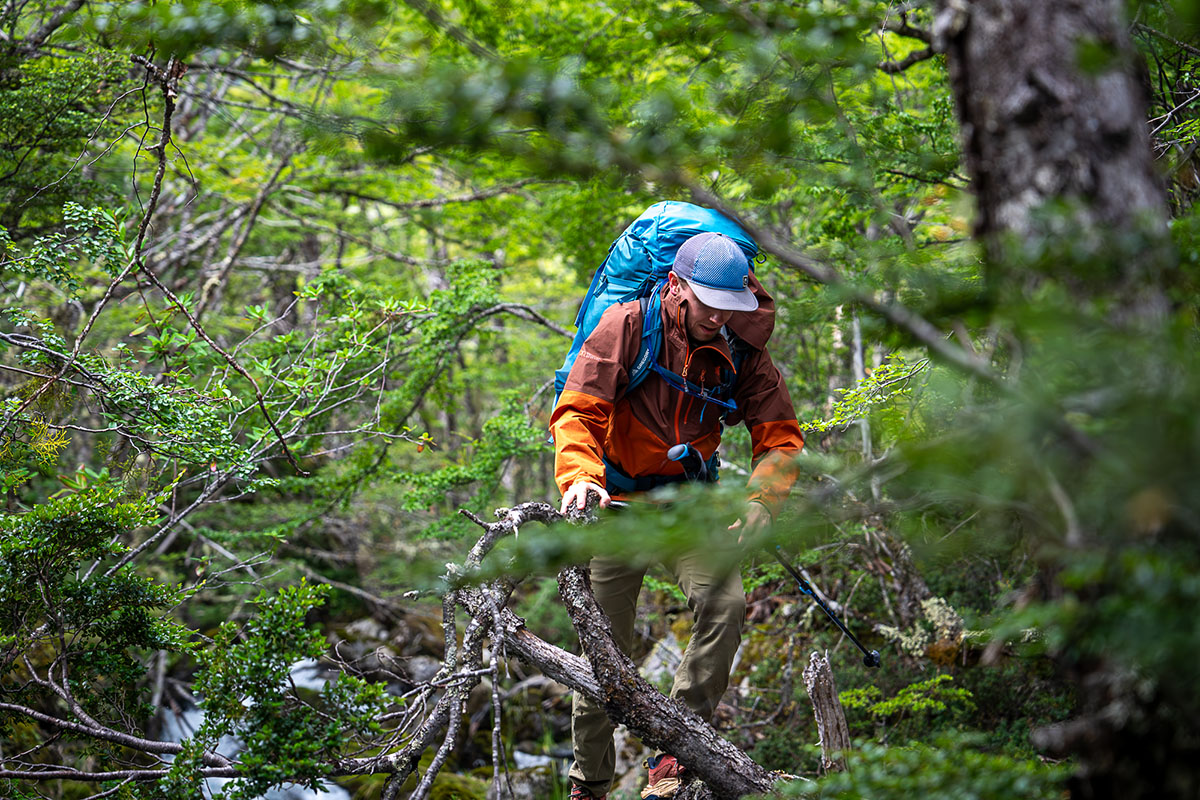
Along with its trimmed-down weight, packability is equally impressive. There’s no two-sided zipper for storing in a hand pocket (the original model did include this feature), but the jacket rolls easily into its hood. Using this method, the OR Foray II GTX compresses to the size of a large burrito, and we had no issue fitting it into small and large packs alike. Of note: For those who prefer to store their rain jackets in a hand pocket, the Foray still stuffs in just fine (and measures a compact 9 by 6.5 in. when stashed in the hand pocket), but it’s more of a pain to zip it back open without the two-sided zipper.
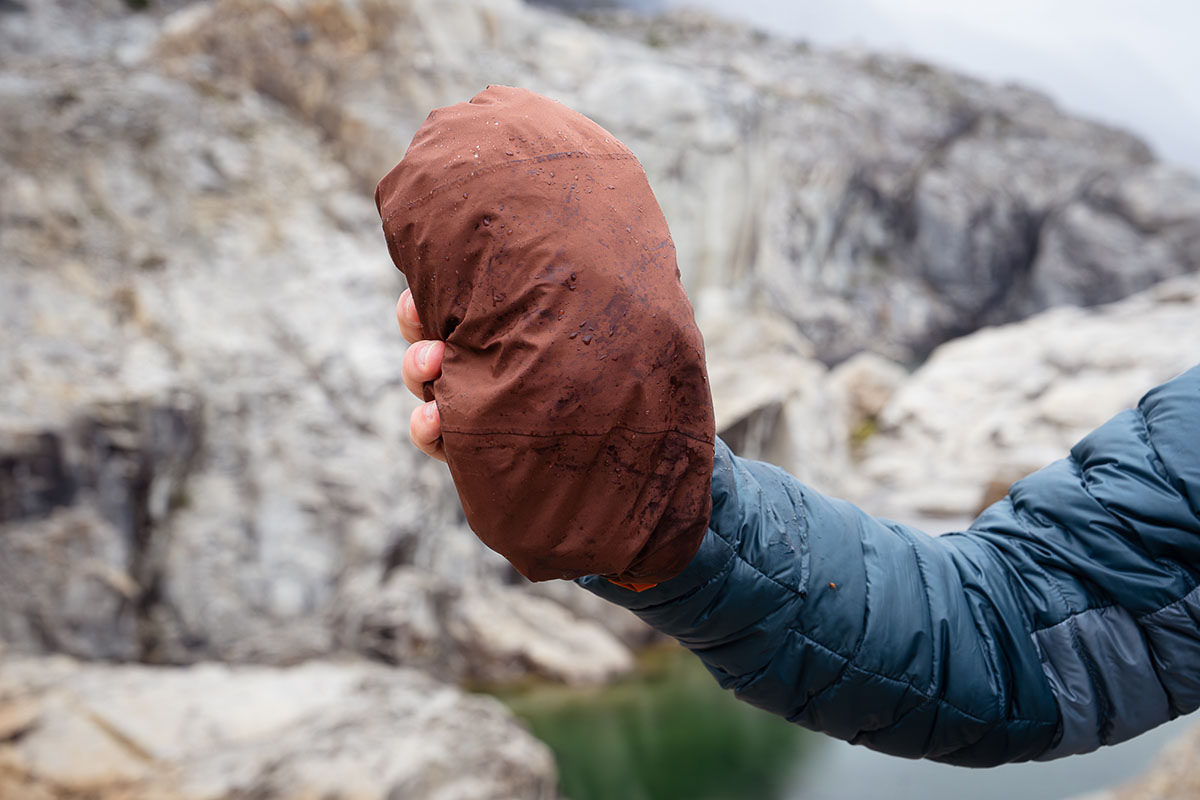
There’s a lot to like about the OR Foray II GTX Jacket when it comes to build quality and durability. Like our experiences with the prior-generation models, which saw their fair share of bushwhacking and rough use and came away unscathed, the latest version is holding up great thus far. Key to its tough build is the 50D polyester shell, which is thick compared to the competition—most alternatives are 40D or thinner—and gives the jacket a relatively substantial feel. Additionally, the stitched seams along the outside of the jacket are well made and show no signs of fraying, the seam taping on the interior is in great shape, and all of the zippers work flawlessly and continue to operate with ease. All told, while the Foray II can’t match the hardwearing nature of a burly 3-layer hardshell, it feels decidedly more robust than other lightweight rain jackets.
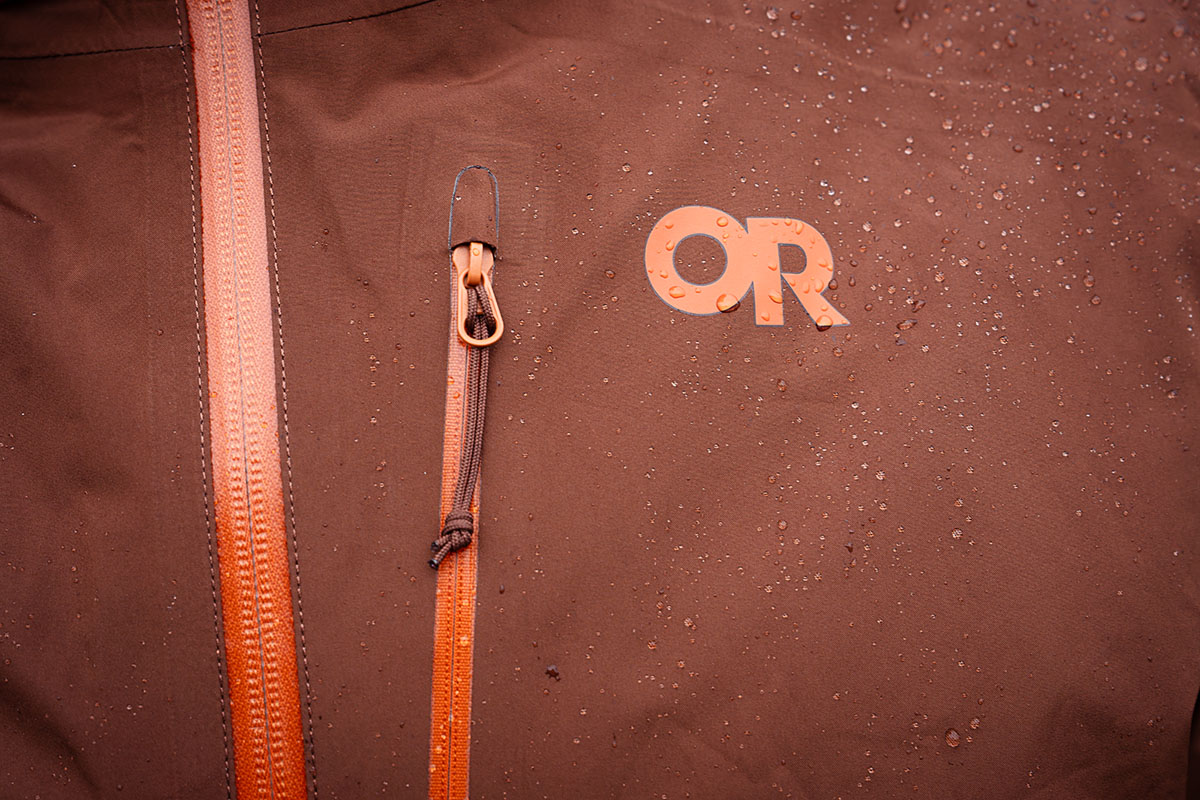
As we touched on above, the OR Foray II’s full-length TorsoFlo side zips are a clear highlight of the design, extending the pit zips all the way to the bottom hem. When fully unzipped, this creates a poncho-like opening for awesome venting on the trail—they’re a great way to dump excess heat while still retaining reliable all-around waterproofing and coverage. The huge openings and dual zippers also mean you can get creative with how you customize airflow. Worn under a backpacking pack, the side zips and their storm flaps are noticeable under the hipbelt but didn’t create any notable pressure points for me. And in poncho mode, the back half of the jacket can even fit over a backpacking pack.
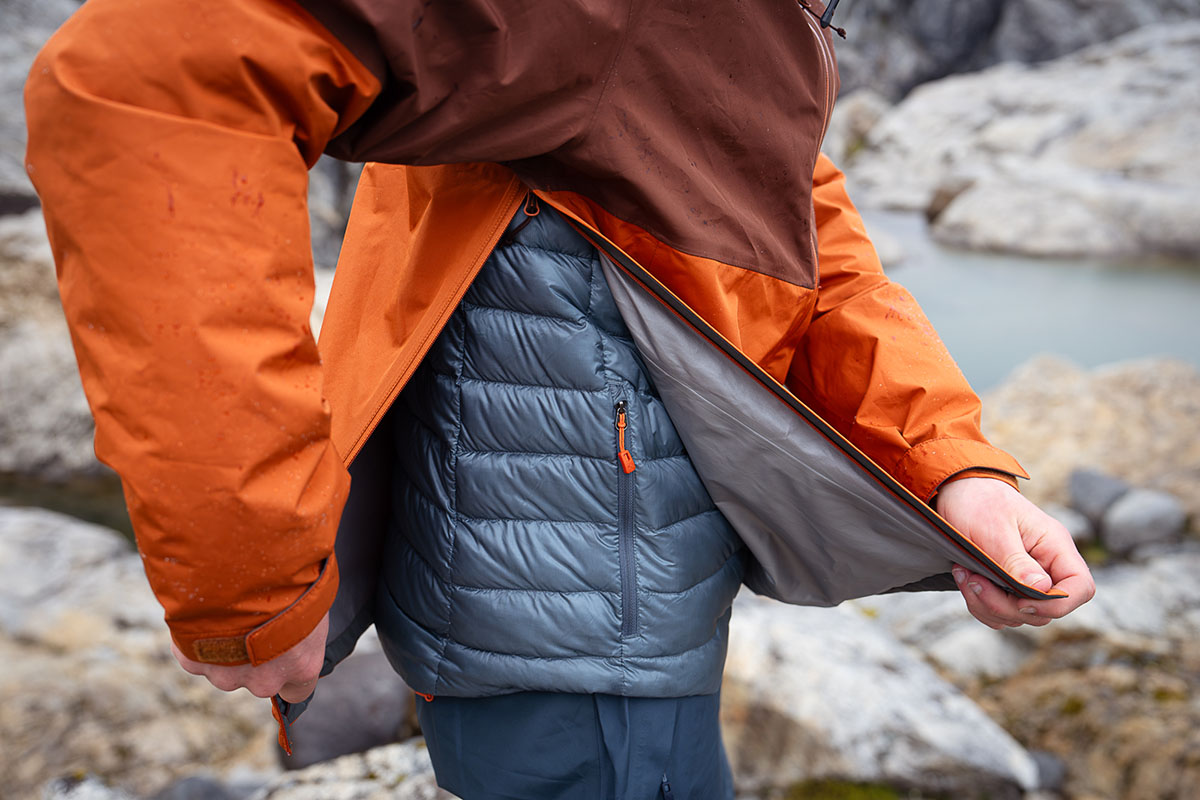
If ventilation is a priority, the TorsoFlo vents are a big selling point of the Foray II, but they do create some quirks and potential downsides. One notable compromise for us is that you can only adjust the hem behind the zipper's bottom stop—the cinch cord only covers the back half of the jacket. This results in a slightly uneven look, with the front side of the jacket smooth and the back bunched up. It's not a dealbreaker per se, but I was aware of the slightly odd fit. And from a styling perspective, the storm flap and exposed zipper pulls at the bottom give the Foray a little more of a technical look than more everyday-friendly designs like the Marmot Minimalist.
We’ve had mixed experiences with OR hoods, but the latest Foray II is a solid all-around effort. For adjustability, the toggle at the back is easy to pinch, and you have two additional drawcords at the front for fine-tuning fit. It’s also generously sized and slides easily over a beanie, trucker hat, or even a low-profile climbing helmet (although it won’t work with a bulkier downhill ski helmet). Combined with the tall collar and semi-rigid bill at the front, you get ample coverage for rough and rowdy weather. And while it takes some work to get an even fit—Arc’teryx’s single-pull StormHood beats the Foray in ease of use—it’s not too effortful. Taken together, the hood’s design matches the rest of the jacket as fully functional for three-season use.

For storage, the OR Foray II GTX Jacket comes with three total pockets. The chest pocket is easy to find with its quality, exposed YKK Aquaguard zipper, and the interior is plenty big for storing moderately bulky items like a smartphone. The zippered hand pockets forego the water-resistant treatment but have storm flaps for protection and are generously sized—plenty big for gloved hands. There’s also a handy key clip integrated into the left hand pocket for added security. It’s worth noting that the hand pockets aren’t hipbelt- or harness-compatible, which is a little surprising given the Foray’s performance slant. This renders them mostly useless for activities like hiking, climbing, and skiing, but the upside is that they’re at a natural height when you’re wearing the jacket around town or without a pack.
Like its predecessor, the latest Foray II hits a real sweet spot for active use and layering. At 5’9'' and 155 pounds, I opted for my standard men’s medium and had zero fit-related complaints. The Foray isn’t excessively big when worn over just a t-shirt, but there’s enough space to accommodate a lightweight puffy (like Patagonia’s Down Sweater or Micro Puff, Arc’teryx’s Cerium, etc.) without feeling restrictive. All told, I’d describe the cut as “regular”—something that should work for a lot of folks. And it’s worth noting that Outdoor Research offers the jacket in a healthy range of sizes, from XS up to XXXL.
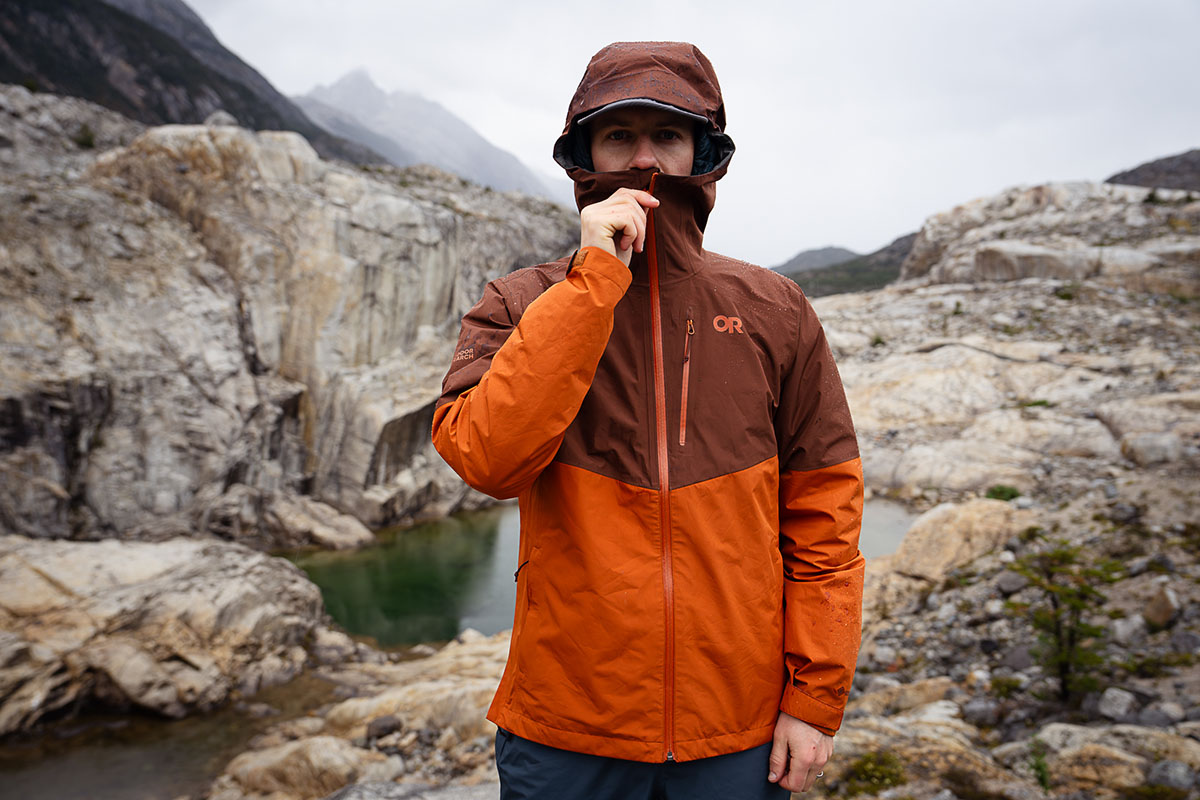
With the latest update, the Foray II GTX stands out as the most sustainably built product in OR’s apparel collection. Like its forebearer, the jacket uses bluesign-approved Gore-Tex, which indicates that it meets strict chemical safety requirements and has been deemed safe for consumers, workers, and the environment. The newest version also employs a 100%-recycled polyester face fabric (the prior model didn’t use recycled materials), along with a PFAS-free DWR coating that forgoes the use of perfluorocarbons, which are known to be harmful to the environment. Taken together, it’s a comprehensive and laudable effort from the brand.
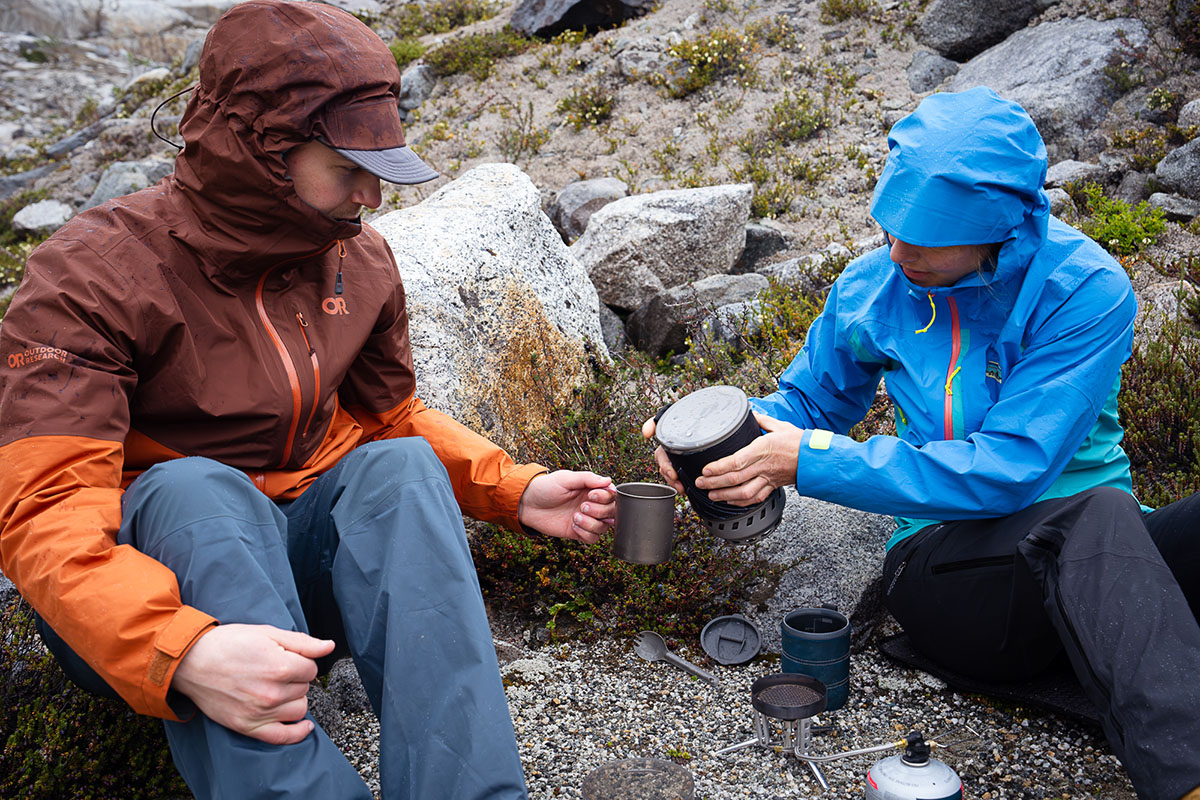
In addition to the men’s Foray II GTX Jacket tested here, Outdoor Research makes Foray Gore-Tex Pants that retail for $180, use the same 2-layer construction, and weigh 12.1 ounces. For an extra $75, OR also sells a stretchy variation of the jacket—aptly named the Foray Super Stretch—that’s largely similar to the standard version but with a stretchy Gore-Tex panel at the back for added mobility. On the women’s side, the Aspire II GTX Jacket costs the same as the Foray and retains a nearly identical build and feature set, including a 2-layer Gore-Tex Paclite membrane, 50D shell, and signature TorsoFlo vents (see our in-depth Aspire review here). The only major differences are weight and colorways, with the women’s Aspire Jacket clocking in at 11.3 ounces and the pants at 10 ounces. Like the men’s jacket, the women’s is also available in a Super Stretch variation for $300, along with a thigh-length trench coat that retails for $249.
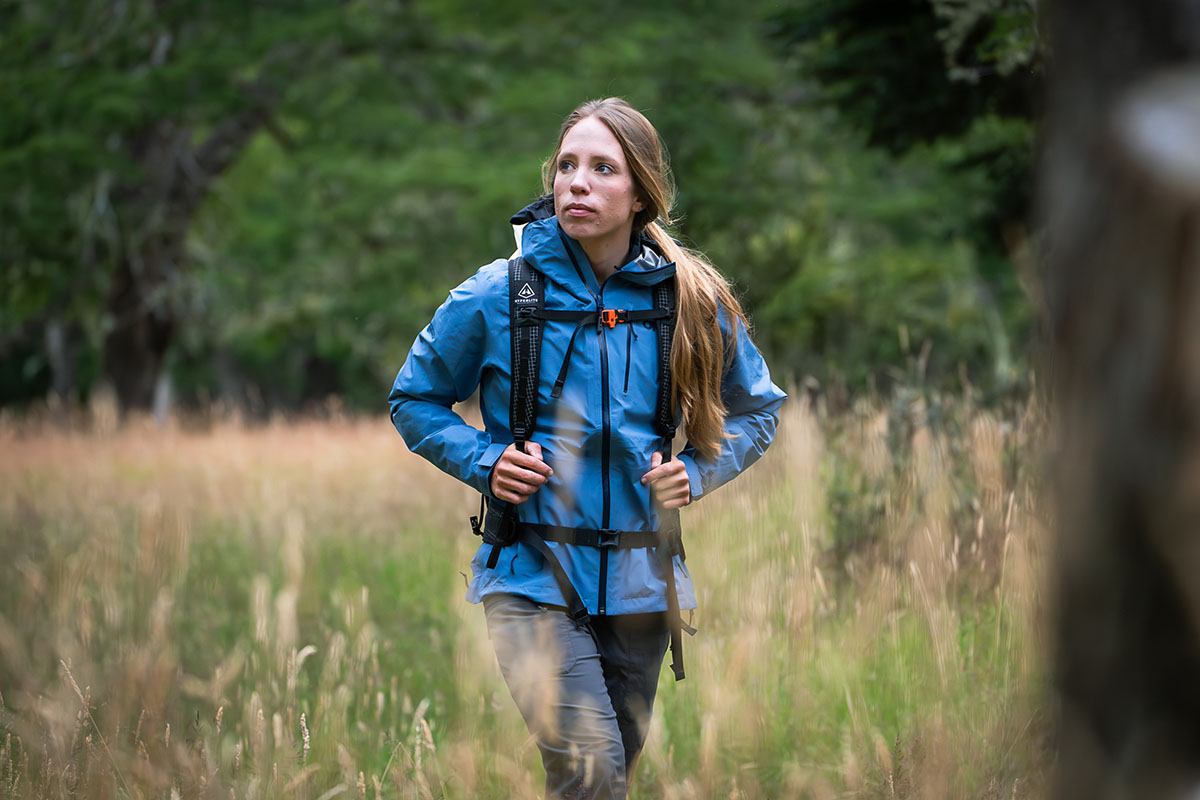
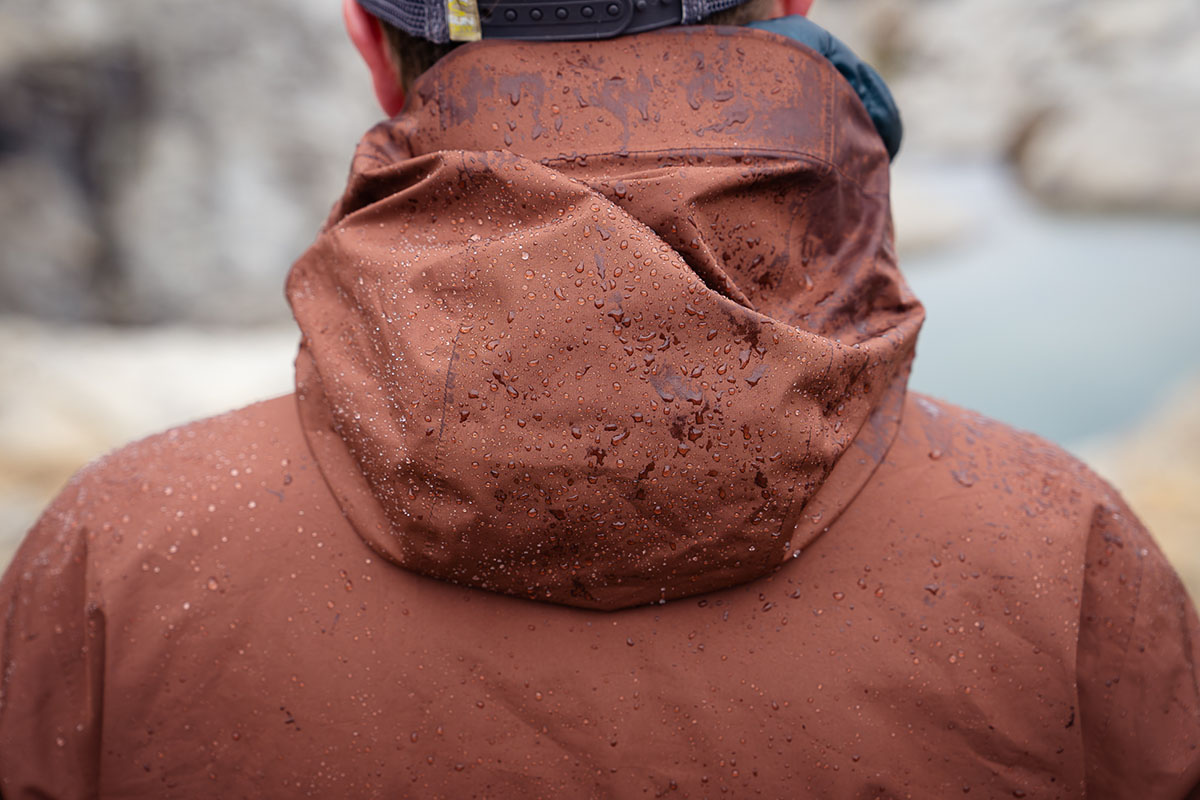
| Jacket | Price | Weight | Category | Waterproof | Shell | Pit Zips |
|---|---|---|---|---|---|---|
| Outdoor Research Foray II | $225 | 11 oz. | Hiking/daily use | 2L Gore-Tex | 50D | Yes |
| Marmot Minimalist | $220 | 13 oz. | Hiking/daily use | 2.5L Gore-Tex | Unavail. | Yes |
| Arc'teryx Beta Jacket | $400 | 13.2 oz. | Hiking/performance | 3L Gore-Tex | 80D | No |
| OR Motive AscentShell | $229 | 10.9 oz. | Hiking/daily use | 3L AscentShell | 50D | No |
| Patagonia Torrentshell 3L | $179 | 14.1 oz. | Daily use/hiking | 3L H2No | 50D | Yes |
Our overall impressions of the Outdoor Research Foray II are positive—enough so that we rank it mid-pack in our round-up of the best rain jackets. Marmot's Minimalist is another one of our favorites and a very well-rounded design for the price. That said, the Foray is lighter by around an ounce, has a higher-quality feel—the Minimalist feels cheap by comparison with its stiff storm flap on the front and less premium fabrics—and gets the clear edge in breathability with its massive TorsoFlo vents (the Marmot has standard pit zips). It’s true the Marmot has a cleaner look for around-town use and also uses reliable Gore-Tex Paclite waterproofing (2.5L), but the Foray is the more complete and performance-ready option for just $5 more.
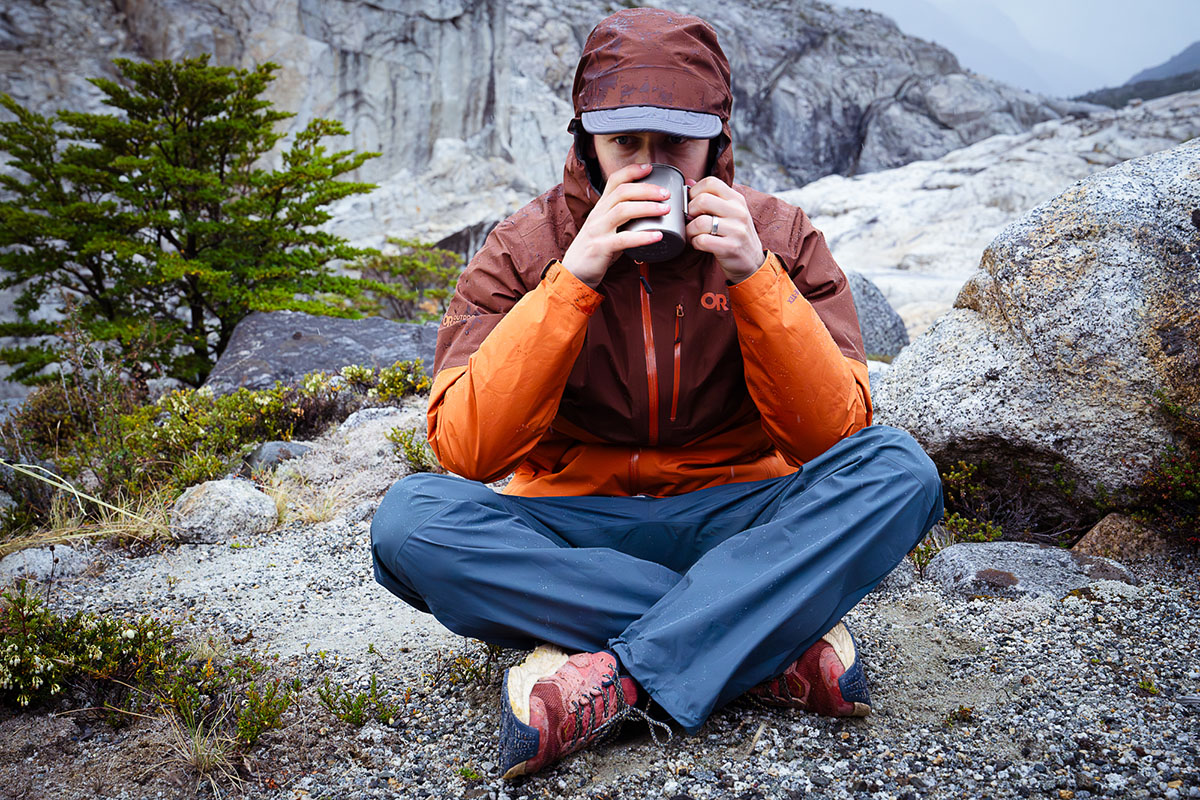
The Foray II’s performance falls short of the premium Arc’teryx Beta Jacket ($400), but so does the price. Both are billed as hiking-centric jackets and use Gore-Tex materials, but that’s where the similarities end. The Beta has a 3-layer construction—compared to the 2-layer Foray—and its softer interior (which uses Gore’s C-Knit backer) breathes better and feels less clammy against bare skin. It also uses a much thicker (80D) shell fabric, although we found the Foray to be plenty hardwearing. And importantly, the Beta omits pit zips, which is a notable downside when you’re working hard. The Arc’teryx is undeniably premium, but the Foray II will save you a whopping $175 and checks all the boxes we look for in a well-rounded three-season rain shell.
Next up is an in-house alternative to consider: the OR Motive AscentShell Jacket. For about the same price and weight as the Foray, the Motive utilizes a 3-layer construction (OR’s AscentShell membrane) that’s highly protective while offering a sizable boost in breathability. The design also includes built-in stretch for better mobility, along with a knit backer that’s comfortable against bare skin. However, the Motive leaves out pit zips and cuff adjustments, and you only get a single drawcord for fine-tuning the fit of the hood. In the end, we think the Foray is slightly more well balanced and versatile despite its less breathable 2-layer build.
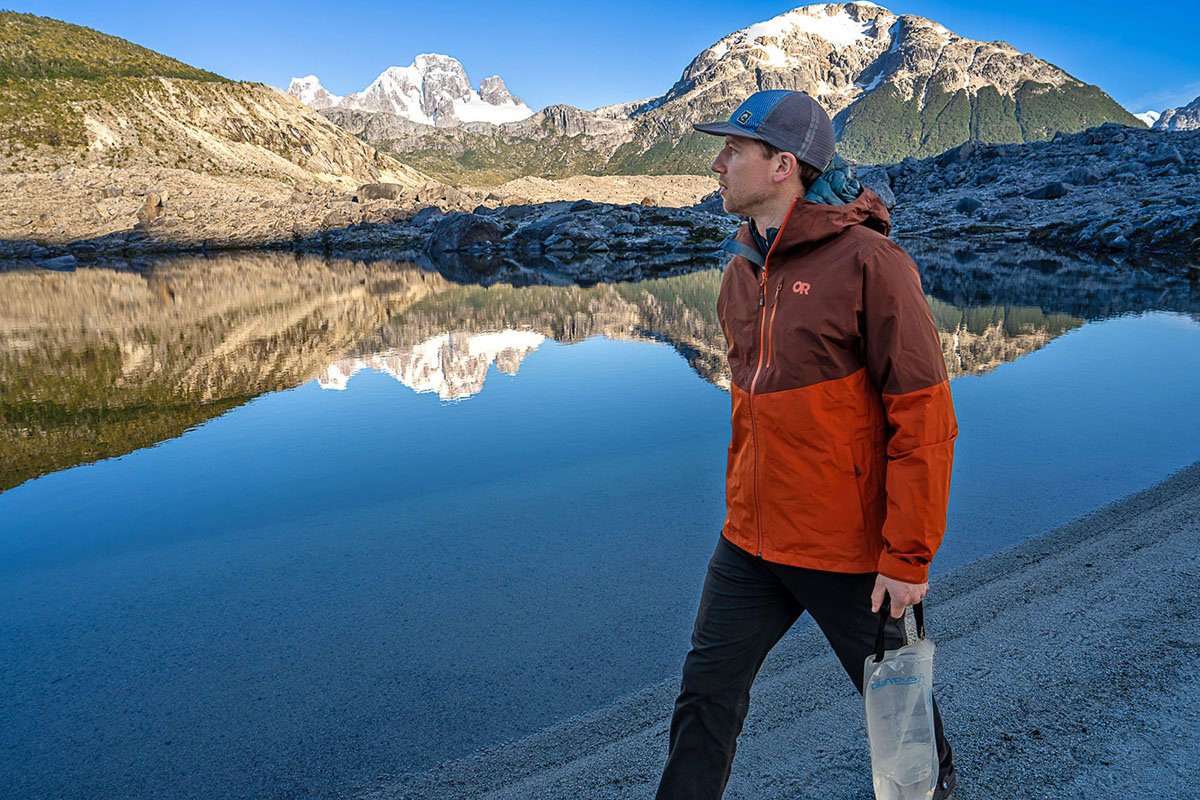
Last but certainly not least is Patagonia’s Torrentshell 3L, which is our favorite overall rain jacket this year. For a very approachable $179, the Torrentshell boasts a performance-ready, 3-layer H2No build that offers trustworthy protection and better breathability than the OR’s 2-layer design. It also has a similarly durable 50D face fabric, retains features like an adjustable hood with a laminated visor (that stows away when not in use), pit zips, and the ability to cinch the hem and cuffs. On the flip side, the Patagonia forgoes a chest pocket, has a boxier cut, weighs around 3 ounces more, and is noticeably stiffer and noisier than the Foray (for more, see our in-depth Torrentshell review). But many folks will be willing to overlook these downsides for the price savings and added everyday appeal, earning the Torrentshell our vote over the Foray.
If you’re thinking about buying gear that we’ve reviewed on Switchback Travel, you can help support us in the process. Just click on any of the seller links above, and if you make a purchase, we receive a small percentage of the transaction. The cost of the product is the same to you but this helps us continue to test and write about outdoor gear. Thanks and we appreciate your support!
Depending on the seller, most products ship free in the United States on orders of $50 or more. International shipping availability and rates vary by seller. The pricing information on this page is updated hourly but we are not responsible for inaccuracies.